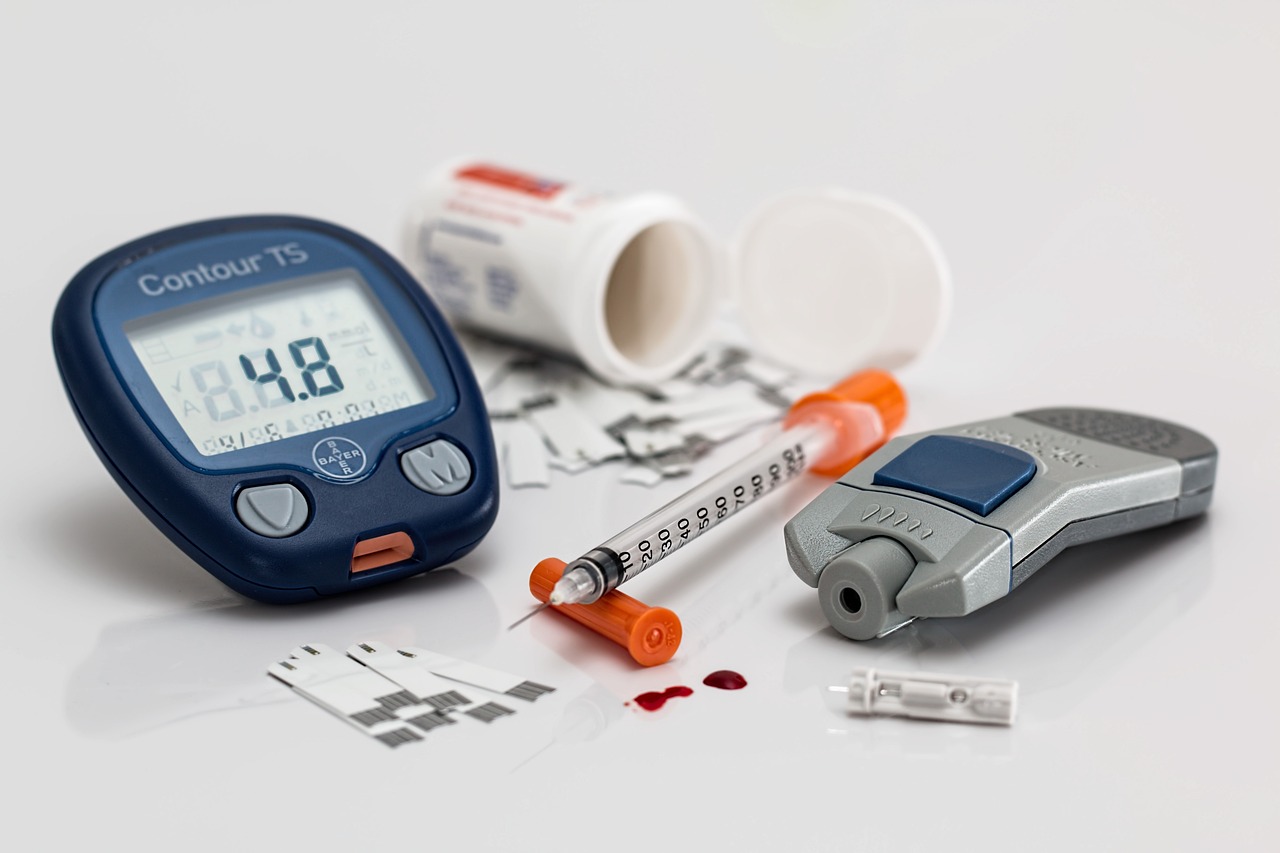7.5-year-risk of Diabetes: %
Did you know that the cases of diabetes have increased up to 37 million in the USA? The situation is undoubtedly alarming due to its life-long health effects. As they say, prevention is better than cure. It is always a good idea to stay away from diabetes, as treating it and getting rid of it is nearly impossible.
The diabetes risk calculator helps you calculate your risk of diabetes so you may take timely precautions. Below, you will find out what diabetes is and how to calculate it with a diabetes risk score calculator.
Diabetes Risk Calculator
The diabetes risk calculator effectively determines your risk of developing diabetes over the course of 7 years. Due to the accurate results, it is a popular tool many individuals use worldwide. Diabetes is a threatening chronic condition characterized by hyperglycemia, and once it worsens, it even attacks other normally functioning organs. Since the risk of diabetes increases with age, you may analyze your chances of developing it based on your age group with the help of a diabetes risk score chart.
Whether you want to test diabetes for your loved ones or yourself, you may seamlessly use the calculator to display the potential chances of developing the disease. Before checking the chances of diabetes, you may need medical data to input certain HDL cholesterol values and fasting glucose values. After you have accessed the laboratory results of these tests, use our calculator by following the given steps:
- Enter your gender.
- Enter your age.
- Enter your height in centimeters, meters, or feet.
- Enter your weight in pounds or kilograms.
- Enter if you have a family history of diabetes or any blood relation is diabetic.
- Choose your ethnicity.
- Enter your Fasting Glucose.
- Enter your systolic blood pressure.
- Enter the value of HD cholesterol.
- Press calculate.
The calculator will generate the probability of developing diabetes over the coming 7.5 years.
The Formula Used by Our Diabetes Risk Calculator
Based on the statistical data provided by each individual, the calculator will provide the results. The formula used by the diabetes calculator to determine the probability of diabetes occurrence is:
Diabetes Risk = 100 / (1 + e^ (-1×((0.028 × age) + (0.661 × gender) + (0.412 × ethnicity) + (0.079 × fasting glucose) + (0.018 × systolic blood pressure) – (0.039 × HDL) + (0.07 × BMI) + (0.481 × family history) – 13.415)))
The chances of developing diabetes are reduced if the individual gets his risk of developing the disease checked regularly.
Incidence of Diabetes Depending Upon Score
Below, we have created a diabetes risk score chart that indicates the probability of encountering diabetes based on the score extracted through the diabetes risk calculator.
| Risk Score | Probability of diabetes occurrence |
| 0 to 14 | Low to moderate risk of diabetes |
| 15 to 20 | High risk of diabetes |
| More than 20 | Extremely high risk of diabetes |
What is Diabetes?
Diabetes Mellitus or diabetes is a chronic health condition that is a combination of several health disorders that collectively affect how the body converts food into energy. The food we intake is converted into glucose, which is released into the blood. The pancreas releases insulin to convert this blood glucose or sugar into energy. A person is diagnosed with diabetes mellitus when enough insulin is not produced, and hence, the level of glucose increases in the blood.
Diabetes can be further classified into three types:
Type 1 Diabetes
Also known as insulin-dependent diabetes, it is triggered when the body mistakenly attacks itself and prevents it from enough insulin production. Almost 7 to 8% of individuals who are diabetic are usually suffering from type 1 diabetes, and they have to take insulin regularly to make their body function the better way.
Type 2 Diabetes
This type of diabetes can be cured with simple yet mandatory lifestyle changes. The majority of people who have diabetes have type 2 diabetes, and it is more common in adults. It is triggered when the body cannot manage the blood’s normal sugar level. People who are diagnosed with type 2 diabetes are suggested to take healthy measures such as weight loss, following a healthy diet, staying active, and participating in exercises.
Gestational Diabetes
This type of diabetes only occurs in pregnant females and usually goes away soon after the baby is born. If a woman develops gestational diabetes during pregnancy, it may lead to health issues in the child and increase her chances of developing type 2 diabetes later.
What are the Symptoms of Diabetes?
Whether it is type 1 or type 2 diabetes, the following symptoms indicate that this chronic disease catches you:
- Peeing more often, especially at night.
- You feel hungry and thirsty most of the time.
- You start losing or gaining weight without doing anything.
- Hands and feet have a tingling sensation throughout the day.
- The skin healing process becomes slower.
- You develop poor sight or blurred vision.
- You start developing more allergic reactions and infections.
- Ketone presence in the urine is verified after medical tests.
If you suspect any of the above-listed symptoms, it is important to get yourself checked. Follow the medical tests prescribed by your healthcare provider so he may create the treatment plan if the results are positive.
Coping with Diabetes
Having diabetes can be overwhelming, especially when dealing with other diabetes-related complications. Since treating diabetes revolves around staying physically active, checking sugar levels more often, and making healthy food choices, it can sometimes be difficult to cope with the regimen. Diabetes Distress is a very common term that refers to those diabetic patients who feel stressed about controlling the disease and feel worried about the potential complications.
However, you can still get over the diseases and stress and cope with them effectively through the following strategies:
- Diabetes may trigger negative feelings and emotions that make you feel stressed. Talking to your doctor about those emotions is important so they may address your concerns with problem-solving solutions.
- Diabetes medicines and insulin are expensive, making treating this chronic disease a more troubling concern. However, there are pharmacies, government-initiated support, and community health centers that can provide help regarding diabetes medicine supply.
- You don’t have to hide your disease from the people around you and share it with your loved ones. Talking with loved ones about troubling concerns greatly helps in de-stressing you. Also, allow them to take care of you, such as reminding you to take medicines on time, checking your blood sugar level, helping you take your insulin, etc.
- Increase your physical activities, as staying physically active helps ditch diabetes. Start with a slower pace and gradually increase your level. Start walking two times a day with 10 minutes reserved for each walk every day.
- Do things that make you feel happier. Spend some time with you, read your favorite book, play with your kids or grandkids, meet your friends, participate in community activities, etc.
When a person is diagnosed with diabetes, he must manage his emotions. The feelings of frustration and stress are very common among diabetic patients, and if you feel yourself developing these emotions soon after being diagnosed with diabetes, it is necessary to get some help. Our diabetes risk calculator effectively estimates your chances of developing diabetes in the coming 7.5 years so anyone can get himself/herself checked to know if the disease is culminating inside.
Bottom Line
If you want to get your risk of developing diabetes checked, our diabetes risk calculator with high probability can be really helpful. By inputting the essential data such as blood pressure, HDL level, gender, weight, height, etc., you will get results, i.e., the probability of encountering the disease in the next 7.5 years. The tool is extremely easy to use, with a user-friendly interface and instant output based on every individual’s input data.
Frequently Asked Questions (FAQs)
Which is the most common type of diabetes worldwide?
Type 2 diabetes is the widely occurring type of diabetes that triggers when the body cannot manage the blood sugar level. By incorporating health with physical activities, you may reduce the symptoms of type 2 diabetes.
Which food should I consume to prevent diabetes?
Certain foods should be consumed to prevent diabetes, such as broccoli, spinach, mushroom, fish, turkey, tofu, quinoa, brown rice, fruits, and oatmeal.
How often should I get my blood sugar checked?
It depends on your health status for instance, if you have type 2 diabetes, it is important to get your sugar level checked at least once a day. Since type 2 diabetes does not show any significant signs, only regular blood tests can help you identify the disease.
What is prediabetes?
Prediabetes is a condition in which the blood sugar increases than normal level but not increased to the extent that it triggers type 2 diabetes. The symptoms of prediabetes arise suddenly, such as increased thirst, frequent urination, severe mood swings, tingling sensation in hands and feet, and frequent body infections.
Which are Blood-Sugar-Lowering Fruits?
Fruits such as berries, melons, papaya, apple, and guava are rich in vitamins and minerals and help lower blood sugar levels.
Which tests are performed to diagnose diabetes?
An HbA1C test is performed to diagnose diabetes for the past three to four months. The test is very simple and is commonly performed for diabetes diagnosis in all age groups.

A fervent champion for holistic well-being, graces this community with her expertise in health and fitness. With a solid educational foundation in physical fitness and a commitment to empowering others, Sara distills her extensive knowledge and experience into actionable insights. Her writing, firmly grounded in evidence-based practices, aims to demystify health complexities and inspire readers to cultivate sustainable habits for a balanced life. As a certified fitness trainer, Sara offers a well-rounded perspective on wellness. Join Sara on this transformative journey towards a happier, healthier, and more vibrant you.










Loading…